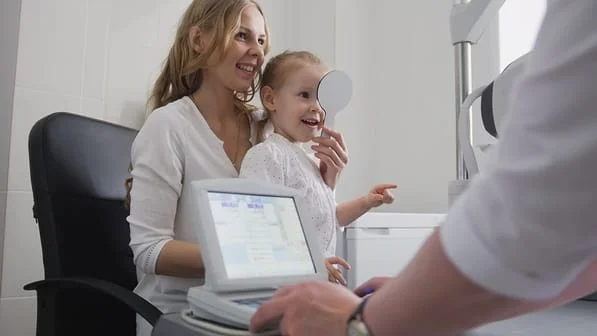Eye Exams for Children
Ensuring the optimal vision of your children is paramount, not only for their academic success but also for their overall well-being and self-esteem. For those residing in or near Wilkes Barre, PA, Engle Eyewear stands as a beacon of excellence, offering specialized pediatric eye exams, including infant eye exams, to guarantee that your children meet essential school vision requirements.
The Dynamics of Pediatric Eye Exams
The nature of the eye exam is tailored to the child's age, recognizing that younger children may not yet possess letter recognition abilities. In such cases, our charts feature common symbols of varying sizes, ensuring an effective assessment. The journey typically begins with the first eye exam for infants, conducted between 6-12 months. During this stage, we meticulously examine factors such as pupil size, light reaction, and the ability to track objects in their field of vision.
Delving into Refraction Tests
Refraction tests play a pivotal role in our pediatric eye exams, especially for infants. By assessing how light refracts in their eyes and dilating the pupils, we gain insights into potential issues with the retina and other crucial eye components. This early intervention enables us to determine if corrective measures, such as glasses, are necessary.
Creating a Calm and Comfortable Environment
Our commitment extends beyond clinical proficiency; we strive to create a stress-free and comforting environment for every child. The caring and composed demeanor of our staff ensures a smooth and controlled experience throughout the visit. We actively encourage questions, addressing any concerns you may have about the tests, fostering a transparent and collaborative approach to your child's eye care.
The Transformation of Vision
Witnessing the positive transformation in your child's vision after an eye exam with us is a shared delight. Our collaborative approach involves working closely with each child, ensuring the best possible care and allowing them to perceive the world anew.
Contact Engle Eyewear in Wilkes Barre, PA
Engle Eyewear is not merely an optical center but a dedicated partner in nurturing the visual health of Wilkes Barre's children. Are you looking for an eye doctor near you? Contact us today to schedule an appointment with an optometrist specializing in pediatric ophthalmology. Our skilled staff is committed to providing comprehensive eye care, ensuring that your child's vision journey begins on the right path.

